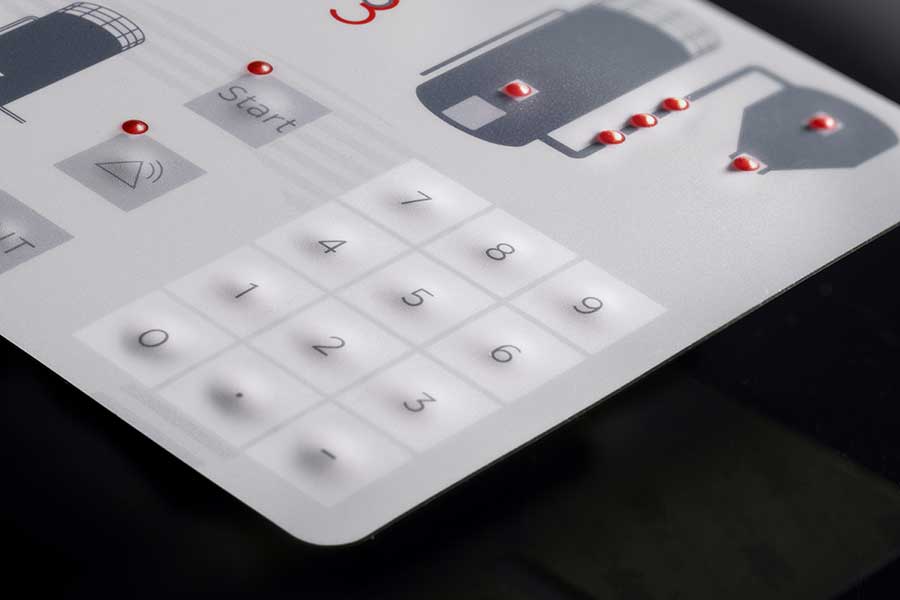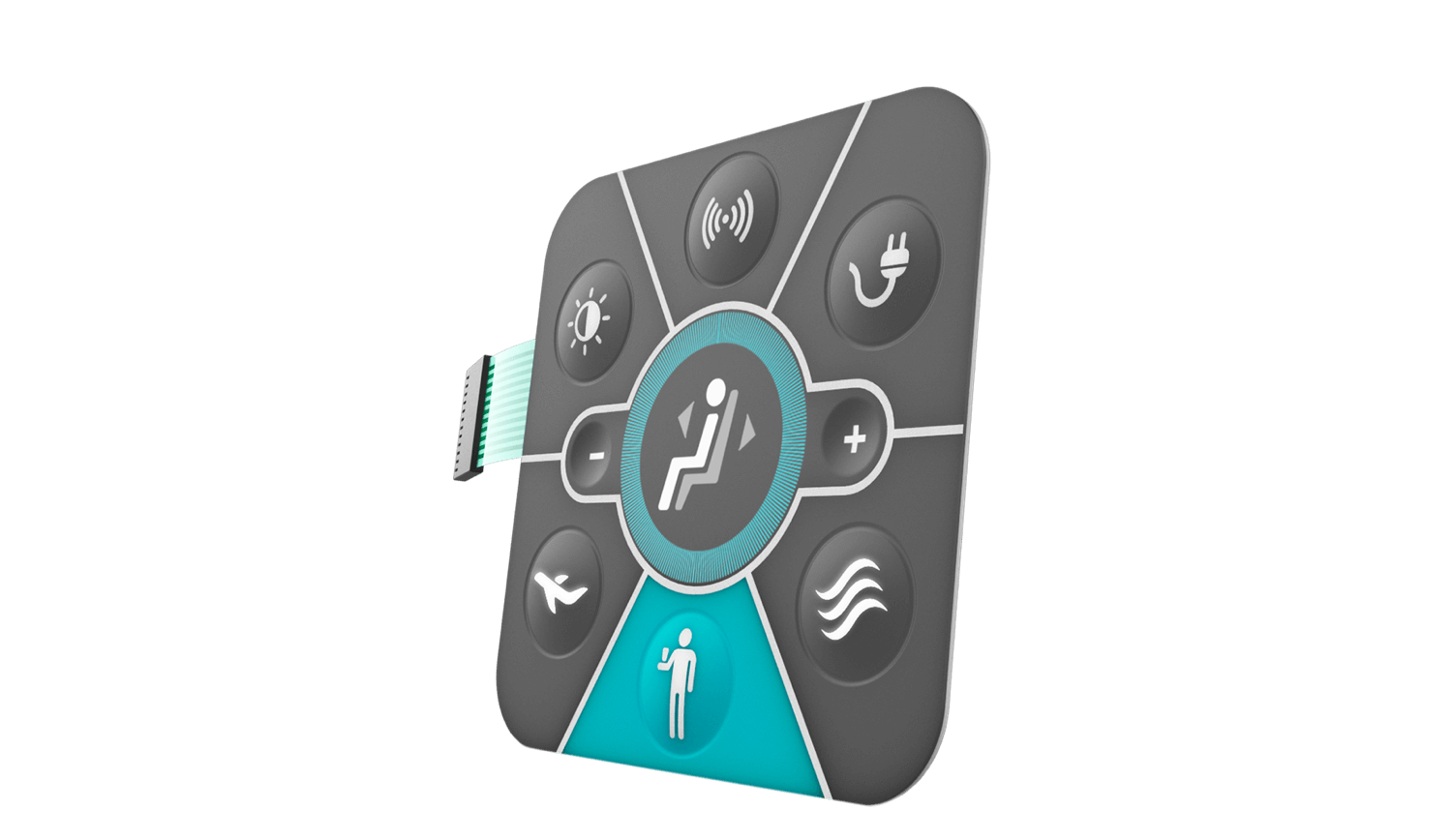Recognizing the Performance of Membrane Layer Changes for Interface Instruments
The functionality of membrane layer switches over represents a significant advancement in individual interface design, integrating efficiency with visual adaptability. As sectors increasingly prioritize user experience, recognizing the nuances of membrane button technology ends up being vital.
What Are Membrane Layer Buttons?
Membrane buttons are cutting-edge user interface devices that facilitate individual communication with digital equipment. These functional elements consist of numerous layers, including a visuals overlay, spacer, and a printed circuit layer. The style enables a smooth integration right into different digital tools, enhancing both the visual and useful aspects of customer interfaces.
Membrane layer buttons are generally employed in a variety of applications, from family appliances to commercial machinery and medical tools. Their construction generally includes a slim profile, making them an excellent selection for compact designs. The responsive feedback supplied by these switches can be engineered to satisfy specific customer choices, making sure reliable communication in between the customer and the device.
Resilience is one more considerable benefit of membrane layer switches, as they are immune to dust, moisture, and chemicals, which improves their life expectancy in demanding environments. In addition, these switches can be customized in regards to form, size, and graphic style, permitting branding and user-specific attributes. Generally, membrane layer switches represent a functional solution for enhancing individual experience in digital tools, incorporating functionality with aesthetic charm in an effective way.
How Membrane Changes Work
Operating on a simple principle, membrane layer changes make use of a split building to register user input successfully. Each button is composed of numerous layers, consisting of a published circuit layer, a spacer layer, and a top visuals layer, which are developed to collaborate seamlessly. When a user presses the leading layer, it presses the spacer layer, bringing the conductive aspects of the circuit layer right into contact with each various other.
This call produces a shut circuit, signaling the gadget to perform a specific feature. The layout enables various arrangements, consisting of tactile feedback, which can improve the individual experience by supplying a physical sensation upon activation. The materials made use of in membrane switches usually include adaptable substrates, such as polyester or polycarbonate, which guarantee longevity and durability against damage.

Key Benefits of Membrane Layer Buttons

One more substantial benefit is their density. Membrane layer switches are thin and light-weight, which makes it possible for suppliers to save space in their tools without giving up performance. This attribute is particularly beneficial in applications where weight and quantity are crucial factors to consider.
Furthermore, membrane layer buttons are immune to dust, moisture, and chemicals, enhancing their find more info toughness. This durability prolongs their lifespan and minimizes the need for regular replacements, resulting in expense savings in time.
Furthermore, the responsive responses offered by membrane layer switches can be maximized to boost customer click for more info interaction. They can consist of features such as raised buttons or distinct clicks, improving functionality and customer experience.
Applications Across Industries
User interface tools using membrane switches prevail in a broad range of sectors, showcasing their adaptability and functionality. Membrane Switch. In the medical market, membrane switches are essential to tools such as diagnostic devices and patient monitoring systems, where their durability and convenience of cleansing are vital for preserving hygiene criteria. In a similar way, in the automotive industry, these buttons are utilized in dashboard controls and infotainment systems, supplying a smooth and modern interface for users.
Moreover, the customer electronics market gain from membrane buttons in devices and handheld tools, where portable layout and easy to use user interfaces enhance user experience. Industrial applications also utilize membrane switches for control board in equipment and automation systems, emphasizing their effectiveness and resistance to severe settings.
In the aerospace and defense markets, membrane layer switches are made use of in cabin controls and equipment, where dependability and performance under extreme problems are paramount. Furthermore, the pc gaming industry significantly integrates membrane switches in controllers and gallery makers, contributing to an interesting customer experience. Generally, the adaptability of membrane websites switches allows their extensive use throughout many markets, underscoring their relevance in modern interface design.
Future Patterns in Membrane Switch Modern Technology

Additionally, making use of sophisticated materials, such as polycarbonate and polyester films, is expected to increase, giving enhanced durability and resistance to environmental stress factors. These products add to the general long life of membrane buttons, making them appropriate for harsher commercial applications.
Moreover, the unification of clever innovation, including IoT connectivity, will allow membrane switches to interact with various other gadgets and systems, promoting an extra interactive customer experience. This trend lines up with the growing need for wise devices across different sectors, from medical care to customer electronics.
Lastly, modification alternatives are anticipated to expand, permitting suppliers to produce bespoke solutions tailored to certain user requirements and choices. These advancements will certainly position membrane buttons as necessary elements in the advancement of interface modern technology.
Conclusion
In final thought, membrane layer switches represent a pivotal development in customer interface modern technology, using a trusted and functional option for varied digital applications. As innovations in material science and touch picking up technologies continue, the functionality and applicability of membrane layer switches are expected to broaden, reinforcing their importance in modern-day digital tools.